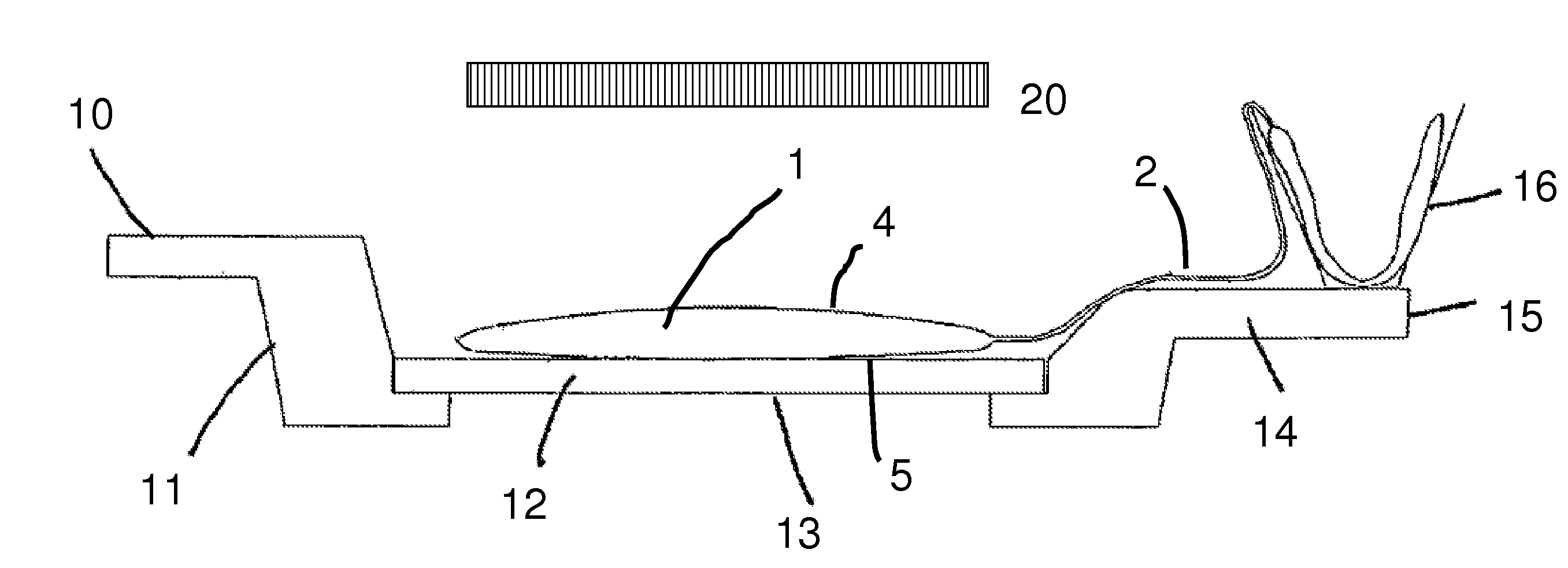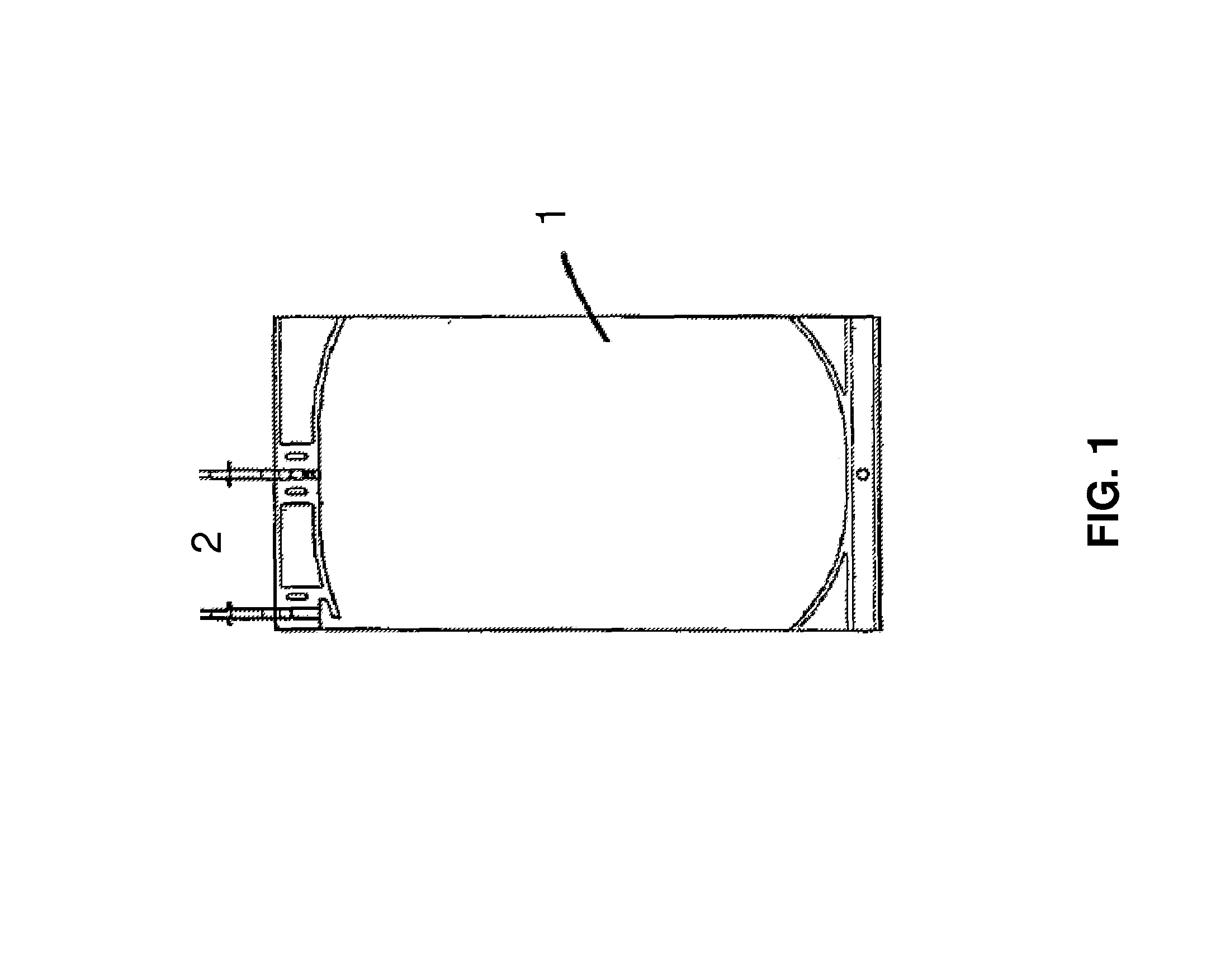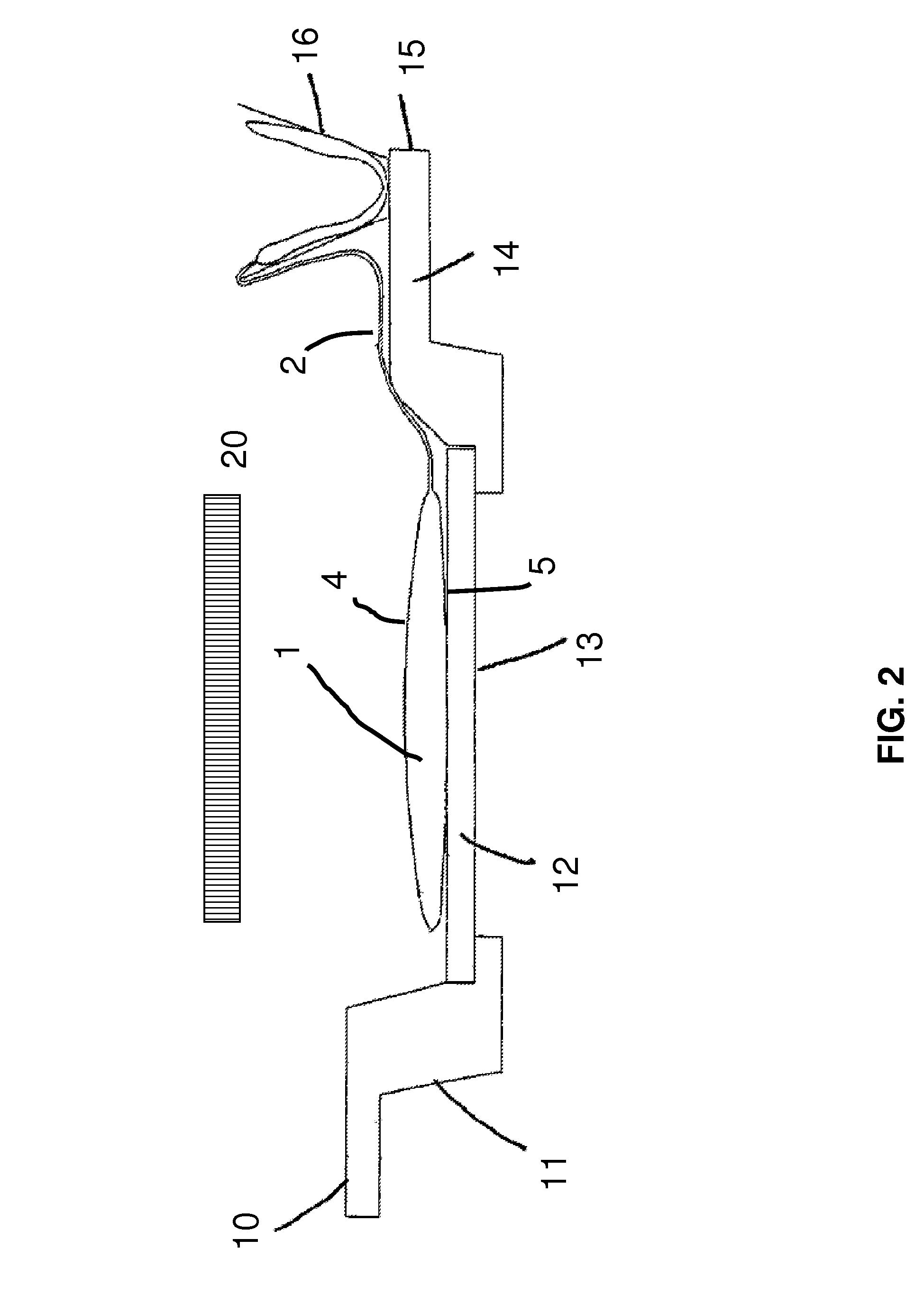Method for the inactivation of pathogens in donor blood, blood plasma or erythrocyte concentrates in flexible containers under agitation
a technology of donor blood and erythrocyte concentrate, which is applied in the direction of blood disorder, instruments, lavatory sanitory, etc., can solve the problems of inability to fully absorb the ecs, the risk of infecting recipients with viruses and bacteria, and the method of photodynamic inactivation of pathogens in ecs has not yet gone beyond the laboratory scal
- Summary
- Abstract
- Description
- Claims
- Application Information
AI Technical Summary
Benefits of technology
Problems solved by technology
Method used
Image
Examples
experimental example 1
Inactivation of VSV in Plasma by UVC
Influence of Agitation Speed and Free Mobility of the Plasma During Irradiation
[0034]Plasma units in irradiation bags were spiked with VSV and irradiated for 2 minutes with UVC. A sample was agitated at 100 rpm and was clamped securely between two quartz plates during the light treatment. The other samples simply lay on a quartz plate, so they could move within the bag during the agitation. The rotational speed of the shaker was varied between 30 and 100 rpm. The results are summarized in Table 1. The virus titer in the fixedly clamped sample was reduced by a factor of only approximately 0.3 log10.
[0035]
TABLE 1ShakingfrequencyVirus titer(rpm)(log10 TCID50)Comments06.21 ± 0.69Control305.78 ± 0.27Loosely placed504.59 ± 0.04Loosely placed750.92 ± 0.24Loosely placed1000.35 ± 0.52Loosely placed1005.92 ± 0.11Clamped
[0036]With the loosely placed samples, the rotational speed had a direct influence on the extent of virus inactivation: at 30 and 50 rpm, th...
experimental example 2
Inactivation of VSV, Sindbis Viruses and SHV-1 in Plasma by Irradiation with UVC
Inactivation Kinetics
[0037]Plasma units were spiked with VSV, sindbis viruses or SHV-1 and irradiated for 1-5 minutes. Samples placed loosely on the orbital shaker were moved at 100 rpm. Control samples were irradiated for 5 minutes but not shaken. Table 2 summarizes the results of the experiments. The VSV titer in the shaken samples was reduced by a factor of more than 6.5 log10 within 3 minutes, whereas the inactivation factor in the unshaken control sample did not exceed 1.5 log10. Sindbis viruses proved to be more stable than VSV, but the great difference between shaken and unshaken samples was manifested here again. After an irradiation time of 5 minutes, the virus titer in the shaken sample had decreased by approximately 5.1 log10 but the titer in the unshaken sample had decreased by only 0.3 log10. A similar result was obtained when SHV-1 was used: in the shaken samples, the virus titer was reduce...
experimental example 3
Inactivation of VSV in Plasma by Irradiation with UVB
Inactivation Kinetics
[0039]Plasma units were spiked with VSV and irradiated from 1 to 5 minutes. The samples placed loosely on the orbital shaker were moved at 100 rpm. A control sample was irradiated for 5 minutes but was not shaken. As Table 3 shows, the virus titer in the shaken samples was reduced by a factor of 6.36 log10 within 5 minutes but the titer in the unshaken control sample was reduced by only approximately 1.5 log10. These results show that the phenomenon discovered—the increase in pathogen inactivation in loosely placed samples due to intense shaking—is not limited to UVC.
[0040]
TABLE 3Virus titerUVB (min)Shaken(log10 TCID50)Control−7.00 ± 016 2+4.70 ± 0.083+3.68 ± 0.124+2.23 ± 0.235+0.64 ± 0.085−5.52 ± 0.08
PUM
 Login to View More
Login to View More Abstract
Description
Claims
Application Information
 Login to View More
Login to View More - R&D
- Intellectual Property
- Life Sciences
- Materials
- Tech Scout
- Unparalleled Data Quality
- Higher Quality Content
- 60% Fewer Hallucinations
Browse by: Latest US Patents, China's latest patents, Technical Efficacy Thesaurus, Application Domain, Technology Topic, Popular Technical Reports.
© 2025 PatSnap. All rights reserved.Legal|Privacy policy|Modern Slavery Act Transparency Statement|Sitemap|About US| Contact US: help@patsnap.com



